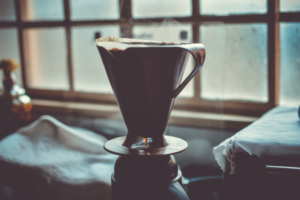Coffee is much more than a simple beverage; it’s a culture, a passion, and a sensory experience. With a history that dates back centuries and a global presence that transcends borders, coffee has captured hearts and palates around the world. A fundamental part of this coffee fascination lies in the variety of brewing methods that have emerged over time, each offering a unique approach to extracting the complex flavors and aromas contained within coffee beans. In this comprehensive guide, we will thoroughly explore the most popular coffee brewing methods, from the classic and traditional to the most contemporary and innovative approaches.
As we embark on this journey through the world of coffee, we will also consider how factors such as bean selection, proper grinding, and water temperature play crucial roles in each process. With insights into the science behind coffee extraction and practical tips to enhance your brewing skills, this guide will become an indispensable companion for coffee enthusiasts of all experience levels.
Whether you’re a coffee lover seeking new taste experiences, an aspiring barista looking to refine your skills, or simply someone curious about the diversity of the coffee world, this guide aims to provide a comprehensive and enriching overview of the most beloved and popular coffee brewing methods. Get ready for a stimulating journey through the senses and flavors as we uncover the secrets behind each aromatic cup.
Drip Brewing Method
Drip brewing, also known as filter brewing, is one of the most widely used methods for making coffee. This method involves pouring hot water over ground coffee beans placed in a paper or metal filter. As the water passes through the grounds, it extracts the flavors and oils, resulting in a clean and smooth cup of coffee. Drip brewing is popular due to its simplicity and convenience, with electric drip coffee makers being a common household appliance.
French Press Method
The French press method, also called the plunger pot or press pot, offers a full-bodied and robust cup of coffee. This method involves steeping coarsely ground coffee beans in hot water for a few minutes. After steeping, a metal mesh plunger is pressed down, separating the grounds from the brewed coffee. The French press method allows for greater control over the brewing time and is appreciated for its rich flavor and stronger caffeine content.
Espresso Method
Espresso, a concentrated form of coffee, is the foundation for various popular coffee drinks such as lattes, cappuccinos, and macchiatos. Brewing espresso involves forcing hot water through finely ground coffee under high pressure, resulting in a small, intense shot of coffee with a layer of crema on top. Espresso machines, whether manual or automatic, are used to achieve the required pressure. The espresso method is valued for its quick extraction and the ability to highlight the unique flavors of different coffee beans.
Pour-Over Method
The pour-over method, known for its precision and delicate flavor, has gained popularity in recent years. This method involves pouring hot water over a bed of coffee grounds in a filter cone or dripper. The water is poured in a slow, circular motion, allowing it to evenly extract the flavors and aromas. The pour-over method requires attention to detail, such as controlling the water temperature and achieving the desired brew time, but it rewards the brewer with a nuanced and nuanced cup of coffee.
Aeropress Method
The Aeropress method is a relatively new addition to the coffee brewing scene but has quickly gained a loyal following. This method involves combining coffee grounds and hot water in a chamber, allowing them to steep for a short period. Then, pressure is applied by using a plunger to force the brewed coffee through a filter and into a cup. The Aeropress is appreciated for its versatility, ease of use, and the ability to produce a clean and smooth cup of coffee.
Cold Brew Method
The cold brew method has gained popularity, especially during warmer months, as it produces a smooth and less acidic cup of coffee. This method involves steeping coarsely ground coffee in cold water for an extended period, usually overnight. The slow extraction process results in a coffee concentrate that can be diluted with water or milk. Cold brew coffee is known for its mellow flavor and low bitterness, making it a refreshing choice for coffee lovers.
Moka Pot Method
The Moka pot, also known as a stovetop espresso maker, is a classic brewing method that originated in Italy. This method produces a strong and flavorful cup of coffee that resembles espresso. The Moka pot consists of two chambers: the bottom chamber holds water, and the top chamber contains ground coffee. As the water heats up, it creates pressure, forcing the hot water through the coffee grounds and into the top chamber. Moka pot coffee has a rich and concentrated flavor, making it a popular choice for those who enjoy a robust brew.
Turkish Method
The Turkish method, also known as Turkish coffee or ibrik coffee, is an ancient brewing method that has been passed down through generations. This method involves finely grinding coffee beans to a powder-like consistency and brewing them in a special pot called an ibrik. The coffee is simmered on low heat, allowing the grounds to settle at the bottom before pouring into small cups. Turkish coffee is known for its strong, thick texture and intense flavor. It is often enjoyed with a touch of sweetness and accompanied by Turkish delights or other treats.
Siphon Method
The siphon, or vacuum pot, brewing method is a visually captivating and precise way to brew coffee. It consists of two chambers: the bottom chamber holds water, and the top chamber contains the coffee grounds. As the water in the bottom chamber heats up, it creates vapor pressure, forcing the water to rise into the upper chamber. After a predetermined brewing time, the heat is removed, and the brewed coffee filters back into the lower chamber through a cloth or metal filter. Siphon-brewed coffee is known for its clean and nuanced flavors.
Single-Serve Pod Method
Single-serve pod machines, such as those that use coffee pods or capsules, have gained popularity for their convenience and consistency. These machines use pre-packaged pods filled with pre-measured coffee grounds. With a push of a button, hot water is forced through the pod, extracting the flavors and producing a cup of coffee. Single-serve pod machines offer a variety of coffee flavors and strengths, making them suitable for those seeking quick and hassle-free brewing.
Conclusion
The world of coffee brewing is a vast landscape, offering numerous methods to suit every preference. From the simplicity of drip brewing to the intensity of espresso and the precision of pour-over, each method brings its own unique characteristics to the cup. Whether you enjoy a smooth cold brew, a strong Moka pot coffee, or the rich flavors of Turkish coffee, there is a brewing method to satisfy your taste buds. Exploring different brewing techniques allows you to discover new flavors, aromas, and textures, enhancing your coffee experience. So, embark on a journey of experimentation and savor the diverse and delightful world of coffee brewing. Cheers to your next perfect cup!



